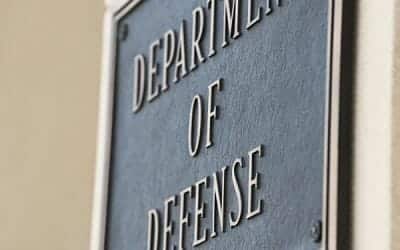U.S. Army – Aris and Alfabet
Meet our customer hero
The U.S. Army is one of the largest military forces, and one of the largest employers, in the world. Its nearly 1 million Regular Army, Army Reserve, and Army National Guard personnel serve a critical national defense role, and strive to uphold the motto: “This we’ll defend.” As an institution with a history more than 200 years, the U.S. Army has maintained its elite fighting shape through constant modernization and world-class efficiency.
The winds of military change
The military of the 21st century is built on data. Streaming in from drones, smart vehicles and wearables, information is needed for everything from exercise histories, to messaging, to collaborative training. Digitaliza- tion—bringing people, processes, and data together in fully connected environments—is mission critical for any government organization. But when it comes to your fighting force, there’s zero room for imperfection.
Data needs to be in real time, transformed through smart analytics, and updated from a hybrid of IT infrastruc- tures and architectures. To be battle ready, the technical and personnel backend has to function like perfect weaponry. But with any business transformation, come risks. And with 17 end-to-end processes (hire-to-retire, budget-to-report, procure-to-pay, etc.), 1,600 operational activities, 700 systems in its IT portfolio and four major ERPs, the U.S. Army needed a robust strategy if its transformation was going to go off without a hitch.
So in 2014, at the start of a five-year project to evolve its business enterprise architecture and streamline and manage its portfolio of business systems and processes—the U.S. Army utilized Software AG’s ARIS platform, a platform already time-tested in other Department of Defense (DoD) projects. ARIS is a core system within the Army’s Enterprise Knowledge Repository (EKR), which acts as a data integration hub pulling in data from the Army Portfolio Management System and DoD System mapping tool, then into the architecture. The EKR supports the data-intensive needs of effective business transformation at the Army by supporting redundancy and road mapping analysis. By adhering Enterprise Architecture into operational activities and other parts of the architecture, powerful and meaningful analytics can be performed.
The results: more efficient redundancy analyses were achieved with greater end-to-end process transparency— and dramatic reductions in operational costs allowed the U.S. Army to re-focus resources on new projects to more quickly achieve desired “to-be” states rather than simply keeping the lights on.
Transparency is where success starts
Business transformations are in vogue these days for good reason. But by analyst firm, McKinsey’s, estimates up to 70 percent of such projects fail. The primary reason? Lack of IT transparency.
Navigating this risk is why many enterprises put Software AG at the helm of their business transformation initiatives. With extensive experience running projects for government organizations and their specific needs, the experts at Software AG harnessed the power of ARIS to answer fundamental questions right from the start: How was the operational budget being spent in relation to the value of currently running systems? Which capabilities were mission critical, and how would those capabilities need to evolve in the years ahead? Given a strict budget and list of strategic priorities, which projects should be pursued and in what order?
To answer these questions, the U.S. Army categorized its data, analyzed its process dependencies, and identified its systems of record against core missions. This involved capturing information spread across disparate systems and in various formats, from email, to PDFs, to databases.
“Our tool is called the Enterprise Knowledge Repository,” said Tim Hunnicutt, Chief Architect, Army—Office of Business Transformation. “It is cored around the ARIS architecture tools, but it has substantial business objects, business intelligence capabilities built in. We use it as a data integration hub.” This let U.S. Army enterprise architects start charting current capabilities against expenses and process steps. Using flexible reports and visualization tools, architecture analysis was easier to present to stakeholders along the full chain of command. And this ensured that spending, particularly on IT and HR, was best aligned to mission objectives.
All onboard
The first half of the five-year transformation has seen many positive outcomes and has been integral in better decision making. And with ARIS demonstrating its value so consistently—the U.S. Army has moved to a new phase of its project, where ARIS Connect and its collaboration benefits are playing an increasingly important role in further expanding the EKR’s reach across new stakeholders.
The ability to deploy a thin client means implementation is easier to achieve across an organization as complex and hierarchical as the U.S. Army. And the fact that ARIS Connect is accessible to a whole range of users—not just technically minded enterprise architects—means everyone can contribute to unlock the U.S. Army’s trove of business data for untold potential.
That’s what we would call fast, fierce, and cutting edge—just the sort of fighting force you want.



